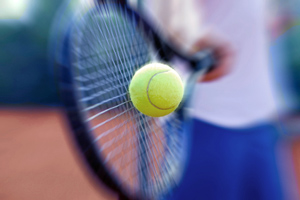Youth sport participation allows children to leave their smart phones behind and promotes an active, healthy lifestyle. In addition to skill development in a particular sport, it can foster goal-oriented teamwork and the ability to develop healthy relationships with peers and coaches. Young athletes typically find enjoyment out of playing sports and at the same time learn valuable life lessons such as leadership, commitment, and navigating adversity.
Most would agree, however, that youth sports are changing. Many athletes are choosing to play one sport year-round at the exclusion of other sports. Termed “single sport specialization,” this trend has become prevalent in youth sports. An athlete is considered “specialized” if they play one sport at the exclusion of other sports for greater than eight months per year3,4. In contrast to the positives of youth sports participation, year-round single sport specialization often comes with a downside. Research has shown a higher risk of overuse injuries, increased psychosocial pressure to succeed, reduced time for play, and a risk of burnout1,3,6 .
Many athletes and parents feel pressure to focus exclusively on one sport to increase their chances of playing in high school, college, or beyond. The message lacking in the media, however, is that that elite athletes were usually multi-sport athletes during their childhood. Research shows that specialization is not necessary to reach an elite level in one’s sport2,5. Tiger Woods and Lionel Messi seem to be the exception, not the rule.
Overuse injuries are tied to playing the same sport year-round without allowing adequate time for rest or cross training in other activities. More specifically, however, it is still unclear what the exact drivers of the overuse injury epidemic are. Is it hours per week, months per year, or intensity of training? Does the type of sport matter? Should we factor in the physiologic age and psychologic maturity of the athlete? Is the problem too much training, too many games, excessive practices, or all of the above? These are the questions that researchers are exploring that will shape our discussions and recommendations on this topic in the future.
We should encourage youth athletes to play multiple sports. Time off for rest and diversified activities that use different motions and muscle groups should be prioritized. We need to emphasize free play. We should encourage athletes to wait until at least high school before focusing on one sport. And we need to track single sport specialized athletes to better understand the cumulative effect of their participation over time.
There are many voices that are influencing children and their parents to focus on one sport at an early age. The perception by many is that this is the path to elite status and athletic prowess. Adults, specifically coaches, should be a balancing force to encourage healthy sport participation and focus on education to prevent overuse injuries and keep athletes on the field.
By Patrick S. Buckley, MD
References: 1. Andrews J, Yaeger D. Any Given Monday: Sports Injuries and How to Prevent Them for Athletes, Parents, and Coaches – Based on My Life in Sports Medicine. New York: Scribner; 2013. 2. Buckley P, Bishop M, Kane P, et al. Early Single Sport Specialization: A Survey of 3,090 High School, Collegiate, and Professional Athletes. Orthop J Sports Med. 2017 Jul 28;5(7): 2325967117703944. 3. Jayanthi NAN. Sports-specialized intensive training and the risk of injury in young athletes: a clinical case-control study. Am J Sports Med. 2015;43(4):794-801. doi:10.1177/0363546514567298. 4. Jayanthi NN. Sports specialization in young athletes: evidence-based recommendations. Sports Health. 2013;5(3):251-257. doi:10.1177/1941738112464626. 5. Popkin CA, Bayomy AF, Ahmad CS. Early Sport Specialization. J Am Acad Orthop Surg. 2019 Nov 15;27(22): e995-1000. 6. Post EG, Trigsted SM, Riekena JW, McGuire TA, Brooks MA, Bell DR. The Association of Sport Specialization and Training Volume With Injury History in Youth Athletes. Am J Sports Med. 2017 May;45(6):1405-1412.



